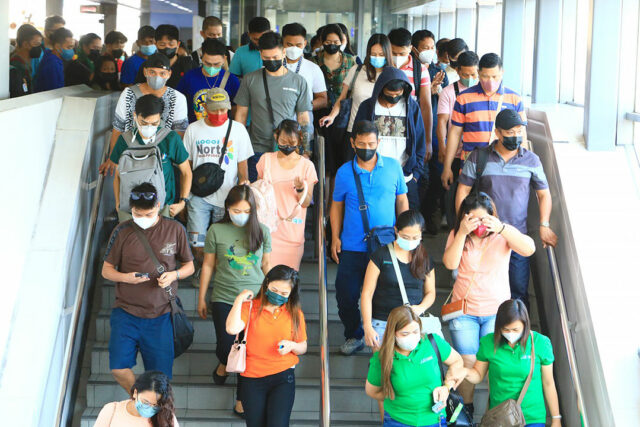About 30 years ago, I recall an initiative by the private sector to study the potential of real property taxes and how an overhaul of the present system of valuing and taxing land nationally and locally can result in higher revenues even while lowering rates for income tax and consumption taxes like value-added tax.
I believe that today more than ever, this matter is worth exploring. As experts from the International Monetary Fund (IMF) noted in a recent blog, raising taxes can “create social unrest.” In this regard, “efficient real estate taxes have an advantage: by being locally collected and spent, they may be politically less challenging than increases in broad-base national taxes.”
More important, noted IMF experts Martin Grote, Mario Mansour, and Francois Wen, “recurrent taxes on immovable property could help local governments capture the wealth generated through construction-intensive urbanization.” This is especially helpful in lieu of taxing income and wealth, “which could be highly mobile.”
I raise this matter in light of comments that the government is likely to face difficulties in convincing Congress to pass new taxes this year and next. Until after the May 2025 elections, at least. Perhaps better timing for new taxes is the second semester next year after a new Congress opens.
As we work to achieve sustainable economic growth, maybe we can rethink the tax structure. Rather than heavily relying on income taxes, perhaps it is timely to consider a strategic shift toward property taxes, and in part, to business, and consumption taxes — especially on goods with negative externalities.
Personal income taxes, though progressive, burdens especially middle-income earners, potentially hindering their spending capacity. By shifting away from personal income taxes and toward property and business taxes, governments can generate more revenues from profitable sectors.
Corporate tax reforms can prove beneficial for revenue generation by minimizing avoidance and fighting evasion. Obviously, to encourage investments, business or corporate income should be taxed at fair and globally competitive rates. But, the government need not bend backwards too much in this regard.
As for shifting more of the tax burden to consumption, this should be skewed specifically towards excise taxes on goods associated with negative externalities, such as sugary beverages; cigarettes, tobacco, and vaping products; beer, liquor, and other alcoholic beverages; and in part, carbon-emitting fuels.
Options include higher excise taxes on jewelry; motor vehicles including motorcycles; and, maybe unhealthy or junk food. The objective is to minimize the consumption of goods that have high social and health costs. It is incidental that taxing them provides a source of revenue. The aim is to discourage harmful consumption behaviors.
By taxing goods that carry social costs, the government can create a two-fold benefit: theoretically it reduces the demand for harmful products, and, at the same time, generate revenue that can be channeled or earmarked for spending on healthcare, environmental protection, and public education.
Mexico introduced a soda tax in 2014 to combat rising diabetes rates, using excise taxes to generate revenue as well as reduce public health costs. Within the first year, sugary drink sales dropped by over 5%, and the tax now provides additional funding for healthcare and public health initiatives. The Philippines has followed suit with its own sugary drinks tax.
As for India, it implemented a carbon tax on coal production to curb emissions and fund renewable energy projects. This excise tax, levied at a specific rate per ton of coal, has raised significant funds for green energy development, highlighting how consumption taxes on polluting industries can drive sustainable development while meeting fiscal goals.
But more government revenues, if feasible, should come from property taxes. And it should be collected and managed at the local level. Property taxes capture wealth accumulated through real estate and ensure that property owners contribute fairly to local infrastructure and service costs.
Property taxes offer a largely untapped revenue stream in many developing countries, where they currently represent only a fraction of what they do in more developed economies. In wealthier countries, property taxes contribute more than 1% of GDP, with some countries reaching nearly 3%. In contrast, emerging regions like Asia and Africa generate only around 0.1% of GDP from property taxes, highlighting a missed opportunity.
By expanding property tax revenues, the Philippines can build a more stable and equitable revenue base, less susceptible to economic fluctuations than income taxes. Shifting the tax burden from personal income to property also allows the government to retain a progressive revenue source without stifling individual earning potential.
In cities like Lagos in Nigeria and Delhi in India, improved property tax collection has reportedly generated more funds for urban development, better waste management, and increased social services — enhancing the quality of life for residents while stabilizing local budgets.
In Lagos, by mapping properties via GIS technology and tightening tax compliance, the city reportedly increased its property tax collection fivefold, generating over $1 billion in a decade. This revenue supports critical urban services and infrastructure improvements, boosting public trust and improving local quality of life.
And in Bogota, Colombia, updated property valuations and tax reforms have reportedly helped municipalities fund local development projects. Linking property taxes directly to urban improvements, Bogota has seen rising public acceptance and compliance, particularly as residents observe the impact on infrastructure and local services.
In Belo Horizonte in Brazil, a clear correlation was reportedly established between property tax revenues and visible local improvements, including road maintenance and waste management. This transparency encouraged higher compliance and provided a stable revenue source for ongoing municipal projects.
To be fair and equitable, property taxes should impose minimal burdens on those without substantial assets. To protect low- and middle-income homeowners from a high tax burden, exemptions and deferred payments can be considered. This way, the government can promote affordable homeownership while ensuring that those who benefit most from urban growth also contribute proportionately.
In raising property taxes, a gradual, phased approach is recommended. Municipal governments should also establish clear policies on exemptions and implement mechanisms for regular public reporting of tax expenditures. By limiting exemptions to a narrow range of beneficiaries, local governments can prevent revenue erosion and ensure funds are available for public services.
For asset-rich but cash-poor households, such as retirees or elderly homeowners, the government can introduce deferral programs that allow taxes to be postponed until the property is sold. Exemptions or rebates can also be given to pensioners and low-income households. This approach ensures that property taxes remain fair and do not impose undue financial hardship on vulnerable groups.
Having localized, visible benefits from higher property taxes can help improve public buy-in, particularly from low- and middle-income groups, and hopefully minimize political resistance to taxation. People should be able to directly observe — see and feel — how their tax contributions translate into public benefits.
Of course, it goes without saying that business or corporate income taxes should continue to play a major role in revenue collection, as they allow governments to capture a share of corporate profits without unduly burdening individual earnings. Fair, but not necessarily low, taxation will allow corporations to contribute to the public good while maintaining the productivity that drives economic growth.
In Colombia, corporate taxes are said to fund local public services and infrastructure projects, showing a direct link between corporate taxation and social development. Such taxes can be earmarked specifically for education, healthcare, and economic development initiatives.
By connecting corporate tax revenue to visible projects, Colombia has built public trust, aligning corporate taxation with social benefits. As a result, corporate tax compliance has reportedly increased, showing how transparency in the use of taxes fosters acceptance and collaboration.
Overhauling property, corporate, and excise taxes on harmful consumption can support a robust and equitable tax base. By shifting away from personal income taxes, governments can create revenue systems that capture wealth more fairly, incentivize healthier behaviors, and fund public services effectively.
Marvin Tort is a former managing editor of BusinessWorld, and a former chairman of the Philippine Press Council
matort@yahoo.com















